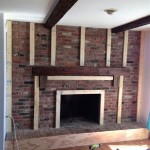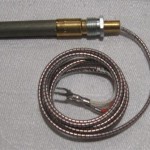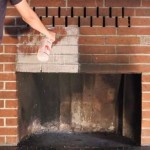How To Paint Your Brick Fireplace Black
Painting a brick fireplace black can dramatically update a room's aesthetic, providing a modern and sophisticated focal point. However, the process requires careful planning and execution to achieve a durable and aesthetically pleasing result. This article details the steps involved in painting a brick fireplace black, from preparation to the final coat.
Preparing the Fireplace for Painting
The first and perhaps most crucial step involves thorough preparation. The success of the entire project hinges on proper cleaning and surface preparation. Begin by protecting the surrounding area. Lay down drop cloths to safeguard flooring, furniture, and other surfaces from paint splatters. Secure the drop cloths with painter's tape to prevent movement during the project.
Next, clean the brick thoroughly. Over time, fireplaces accumulate soot, dust, and grime. Use a wire brush to scrub away any loose debris or flaking mortar. For stubborn soot stains, employ a specialized fireplace cleaner or a solution of trisodium phosphate (TSP) diluted with water. Always follow the manufacturer's instructions when using cleaning chemicals, and wear appropriate protective gear, such as gloves and eye protection.
After cleaning, rinse the brick thoroughly with clean water and allow it to dry completely. Moisture trapped within the brick can compromise the paint's adhesion, leading to peeling and blistering. Allow at least 24-48 hours for the brick to dry completely before proceeding to the next step.
Inspect the brickwork for any cracks or damaged mortar joints. Repair these imperfections with appropriate patching compounds designed for masonry. Allow the patching compound to cure fully according to the manufacturer's instructions. Once the patching is dry, sand the repaired areas smooth to create a seamless surface for painting.
Selecting the Right Paint and Primer
Choosing the correct paint and primer is vital for achieving a long-lasting and visually appealing finish. Not all paints are suitable for brick, especially those exposed to heat. The heat from a fireplace can cause some paints to blister, crack, or emit unpleasant odors.
A high-heat paint, typically used for stoves and grills, is necessary for the firebox itself, the area directly exposed to the flames. However, for the surrounding brick facade, a high-quality latex paint with a matte or satin finish is generally recommended. Latex paint is durable, easy to clean, and offers good adhesion to brick surfaces. Avoid oil-based paints, as they can yellow over time and are less breathable than latex options.
Primer is an essential component of the painting process. It helps to seal the porous brick surface, providing a uniform base for the paint to adhere to. Use a masonry primer specifically designed for brick. Apply the primer evenly, using a brush or roller, ensuring that all surfaces are covered. Allow the primer to dry completely according to the manufacturer's instructions before applying the paint.
Applying the Paint and Finishing Touches
With the preparation complete and the correct materials selected, the painting process can begin. Use a high-quality brush or roller designed for use on textured surfaces like brick. A brush is often more effective for getting into the crevices and irregularities of the brick, while a roller can cover larger, flat areas more quickly.
Apply the first coat of paint in thin, even layers. Avoid applying too much paint at once, as this can lead to drips and runs. Work the paint into the brick's texture, ensuring that all surfaces are thoroughly covered. Allow the first coat of paint to dry completely before applying the second coat. Drying times can vary depending on the paint type and environmental conditions, so consult the manufacturer's instructions.
After the first coat has dried, inspect the surface for any imperfections or areas that require additional coverage. Apply a second coat of paint, again in thin, even layers. This second coat will provide a more uniform and durable finish. Once the second coat has dried completely, carefully remove the painter's tape and drop cloths.
For fireplaces that are actively used, consider applying a heat-resistant sealant to the painted surfaces. This sealant will provide an extra layer of protection against heat and soot, helping to maintain the painted finish over time. Follow the manufacturer's instructions for application and drying times.
Finally, inspect the finished fireplace for any touch-ups that may be needed. Use a small brush to carefully touch up any areas that are missed or where the paint is thin. Allow the touch-up paint to dry completely before using the fireplace.
Proper ventilation is important during and after the painting process. Open windows and use fans to circulate air and expedite the drying process. This will also help to reduce any lingering paint odors.

Our Black Painted Fireplace Bright Green Door

30 Gorgeous Painted Brick Fireplace Ideas

Our Black Painted Fireplace Bright Green Door

Our Black Painted Fireplace Bright Green Door

Our Black Painted Fireplace Bright Green Door

Painted Black Brick Fireplace Diy Inspired

Easy Weekend Fireplace Makeover Best Paint To Use Catholic Home

Painted Black Brick Fireplace Diy Inspired

Painted Black Brick Fireplace Remodelaholic

How To Paint A Black Brick Fireplace Jennifer Allwood
Related Posts








